Latest posts by (see all)
- The Best Things to Do in Tulsa - June 26, 2020
- The Most Interesting Things to Do in Springfield Mo - June 15, 2020
- Best Things to Do in Salt Lake City - May 26, 2020
- 10 Best Websites for Playing Online Games - May 22, 2020
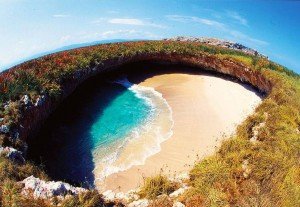 Mexico City is the ancient capital of America, built in the first half of the 16th century on the site of the ruins of the ancient capital of the Aztecs – the floating city of Tenochtitlan. The city is located in the high valley at an altitude of 2240 m above sea level.
Mexico City is the ancient capital of America, built in the first half of the 16th century on the site of the ruins of the ancient capital of the Aztecs – the floating city of Tenochtitlan. The city is located in the high valley at an altitude of 2240 m above sea level.
Mexico City is called the city of palaces. In fact, the capital has 2 centers declared the World Heritage by UNESCO. The first one, Historic, which attracts tourists with the more than 700 years of history: it is the area of the Zocalo or Constitution Square, which lie on the site of the former “large area” of the Aztecs. It overlooks the National Palace, built on the site of Montezuma’s palace, once the residence of the Spanish viceroys. The second center of Mexico, which is also the World Heritage Site, is an ecological park Hochimilko. Thanks to the many picturesque canals Hochimilko is often compared to Venice.
This is just the small part of those places, which Mexico is able to offer travelers. Let’s see what you can expect from your journey to Mexico with this virtual tour around the city:
Contents
- Place to visit number 1: Basilica de Santa Maria de Guadalupe
- Place to visit number 2: Palace of Fine Arts
- Place to visit number 3: Frida Kahlo Museum
- Place to visit number 4. Tenochtitlan
- Place to visit number 5: Templo Mayor
- Place to visit number 6: Stadium Azteca
- Place to visit number 7: National Museum of Anthropology
- Place to visit number 8: Chapultepec Castle
- Place to visit number 9: Trotsky House
- Place to visit number 10: Plaza of the Three Cultures
- Video
Place to visit number 1: Basilica de Santa Maria de Guadalupe
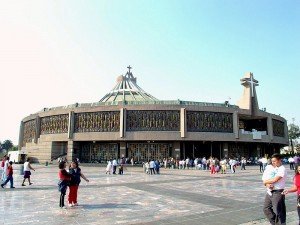 The main temple of Mexico counts its history back to 1531. According to the legend, the same year an ordinary peasant Juan Diego saw the image of the holy Virgin Mary. The man spoke about his vision to the bishop but the priest didn’t believe him. When the image appeared again to Juan, he saw that there were roses on the snow-covered ground. The farmer picked flowers, hid them under his cloak and went to the church. When he came to the bishop, cape was suddenly filled with bright light, and the image of the Virgin Mary appeared. These events on a hill Tepeyac served the reason to build a temple in honor of the Mother of God, who later became a center of pilgrimage.
The main temple of Mexico counts its history back to 1531. According to the legend, the same year an ordinary peasant Juan Diego saw the image of the holy Virgin Mary. The man spoke about his vision to the bishop but the priest didn’t believe him. When the image appeared again to Juan, he saw that there were roses on the snow-covered ground. The farmer picked flowers, hid them under his cloak and went to the church. When he came to the bishop, cape was suddenly filled with bright light, and the image of the Virgin Mary appeared. These events on a hill Tepeyac served the reason to build a temple in honor of the Mother of God, who later became a center of pilgrimage.
One of the major shrines of the Basilica of Our Lady of Guadalupe is the same cloak of a peasant. Scientists have repeatedly investigated it, but were unable to give an explanation as cape woven from grass could survive almost for five hundred years.
To accommodate all the faithful and pilgrims, the temple in Mexico City was completely rebuilt several times. But these changes have not affected on the cloak with the image of St. Mary.
Tourists also have the opportunity to do other things here:
- Visit the museum at the church,
- Go to the library,
- Go shopping to buy religious souvenirs.
Interesting: By the way, it was proved that the image of the Mother of God was not draqwn with a brush and paints.
Place to visit number 2: Palace of Fine Arts
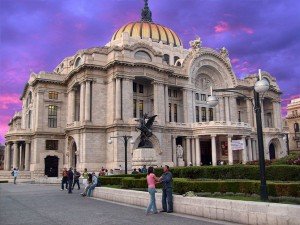 Palace of Fine Arts or Palacio de Bellas Artes is located in the historic center of Mexico City and is considered one of the main symbols of the Mexican capital. Most part of the magnificent architecture is occupied by opera concert halls. In this regard, many tourists visit Palace of Fine Arts in Mexico City to listen to and see the best opera and ballet performances by Mexican artists. The guests of the palace are very impressed by its interior decoration as well.
Palace of Fine Arts or Palacio de Bellas Artes is located in the historic center of Mexico City and is considered one of the main symbols of the Mexican capital. Most part of the magnificent architecture is occupied by opera concert halls. In this regard, many tourists visit Palace of Fine Arts in Mexico City to listen to and see the best opera and ballet performances by Mexican artists. The guests of the palace are very impressed by its interior decoration as well.
Literally every detail of its interior is made with the utmost luxury and elegance. Best Mexican artists worked on the creation of the palace wall painting. Knowing at least one of these facts about the Palace of Fine Arts in Mexico City, it is worth visiting it. As for the history of the Mexican palace, it was built in the early 20th century by the Italian architect Adamo Boar. Apparently, the building was made in the best traditions of European style.
In addition to opera and ballet performances in the Palace of Fine Arts in Mexico City, you can visit various exhibitions. This is possible thanks to the fact that the building has two museums:
- the Museum of Architecture,
- the National Museum of Fine Arts Palace.
Interesting: Both museums are open for tourist excursions the whole year round. The palace has also a cafe (it is located in the lobby on the ground floor), which can be visited when you feel hungry after sightseeing.
Place to visit number 3: Frida Kahlo Museum
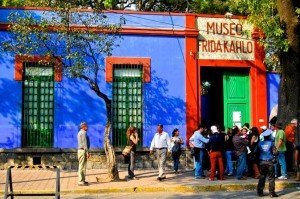 Museum of the most famous Mexican painter Frida Kahlo is located in the house where she was born, grew up and spent her entire life. Together with Frida Kahlo
Museum of the most famous Mexican painter Frida Kahlo is located in the house where she was born, grew up and spent her entire life. Together with Frida Kahlo
her husband lived in the house. He was no less famous than his wife – artist- moralist Diego Rivera.
In 30-40 years of the twentieth century this house of the cornflower blue color was a meeting place for local intellectuals. A couple of years even Leon Trotsky lived with his wife there. Everything in the house has remained till the modern times.
Today, walking through the rooms, you can see those items that were used by Frida and Diego:
- The easel,
- palette,
- brushes,
- souvenirs,
- photos of the couple,
- a wheelchair (Frida was seriously damaged in an accident, and a long time was confined to it).
Interesting: Besides the red clay figurines, souvenirs and jewelry that can be seen everywhere in the house, Frida and Diego were collecting cultural objects of pre-Columbian civilizations.
Place to visit number 4. Tenochtitlan
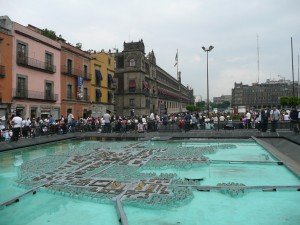 Tenochtitlan is the name of the ancient city, the Aztec capital, which was destroyed in the 16th century by the conquerors – the Spanish conquistadors led by Hernan Cortes. Today, only ruins remained from Tenochtitlan. They lie practically in the heart of Mexico City, the modern capital. Everyone who visits them is amazed at how big and beautiful an ancient city was in its heyday.
Tenochtitlan is the name of the ancient city, the Aztec capital, which was destroyed in the 16th century by the conquerors – the Spanish conquistadors led by Hernan Cortes. Today, only ruins remained from Tenochtitlan. They lie practically in the heart of Mexico City, the modern capital. Everyone who visits them is amazed at how big and beautiful an ancient city was in its heyday.
Some historical facts:
- Tenochtitlan was founded in 1325 in the middle of the salt lake of Texcoco. Why in the middle of the lake? Everything is simple: since the Aztecs were commanded by the God of Sun and War Huitzilopochtli.
- A lot of work was done to build the whole settlement on the water. Gradually the city grew. There were dams, bridges, canals and lakes in it, where one could travel by boat – just like in the modern Venice. About 300 temples were built by godly Aztecs. To make the city prosper they regularly offered human sacrifices.
- It was the end of the second century of the existence of Tenochtitlan. There were no signs of trouble, how unexpectedly the city was attacked by the army of the Spanish conquistadors. For several months, the Aztecs defended, but were not been able to resist the onslaught of invaders. Great city fell. Local residents were killed and buildings destroyed.
Nevertheless, the ruins of Tenochtitlan survived. Today they are one of the most popular tourist destinations in the whole Mexico.
Unusual material was used by the Aztecs in the construction of the altar of the god Tsompantli – stone skull in the amount of 240 pieces. Images of skulls, by the way, can be seen on other ruins. The inhabitants of Tenochtitlan were possessed by them. Skull, in their opinion, symbolized the underworld. The best preserved place here is the lower city, built by the Aztecs under the ground, which was not detected by the Spanish invaders. The main attraction of the legendary Tenochtitlan is a temple with an altar to God Tsompantli.
Today it is better to see the fabled city of the Aztecs on the tour bus. The greatest interest among tourists is the temple complex of the Templo Mayor, which was discovered only in the 17th century.
Interesting: The ruins of Tenochtitlan were located not far from the center of modern Mexico City – only five hundred meters away. A visit to the ancient city is completely free.
Place to visit number 5: Templo Mayor
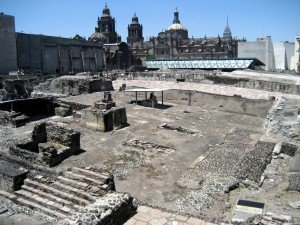 Templo Mayor is a unique open-air museum in Mexico City. The official opening of the complex (the name is translated as “the main temple”) was held in 1987 after a sensational archaeological studies conducted in this area of the Mexican capital. During the excavations, scientists have discovered more than 7 thousand artifacts, including a miraculously preserved pyramids and temples in honor of the main deities of the Aztecs and other ancient places of worship, which then entered the exposure of the Templo Mayor.
Templo Mayor is a unique open-air museum in Mexico City. The official opening of the complex (the name is translated as “the main temple”) was held in 1987 after a sensational archaeological studies conducted in this area of the Mexican capital. During the excavations, scientists have discovered more than 7 thousand artifacts, including a miraculously preserved pyramids and temples in honor of the main deities of the Aztecs and other ancient places of worship, which then entered the exposure of the Templo Mayor.
The museum consists of several rooms. Thus, the archeology section presents:
- various sculptures,
- everyday objects,
- ritual artifacts of the peoples who lived in this area for many centuries.
In the hall of rituals and sacrifice you can see artifacts that testify to the ancient traditions of funeral and the offerings made in honor of the gods.
The Templo Mayor offers to see even the remains of ancient plants, fish and animals. These exhibits are in the Hall of the flora and fauna of the museum complex. There is an exhibition in one of the halls of the museum showing how the Aztecs and the Mayans were involved in the agriculture.
A lot of interesting things you can learn visiting the hall of tribute and trade Templo Mayor. It exhibits objects which many centuries ago served to regulate trade relations and issues related to the payment of tribute:
- scepters,
- bills,
- jewelry made of gold and silver,
- various corals,
- shells,
- and other exhibits.
Interesting: Two separate Templo Mayor rooms tell tourists about the major deities of the Aztec – Huitzilopochtli (god of the sun and war) and Tlaloc (god of rain and thunder). In these parts of the museum all kinds of sculptures and figures of deities are presented.
Place to visit number 6: Stadium Azteca
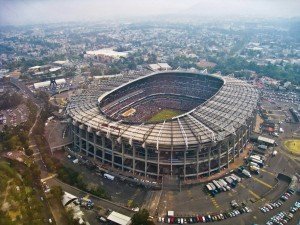 The famous Mexican stadium Azteca was built in the early 60-ies of the last century with the aim to held Summer Olympics (they were held in 1968). Since then, the Mexican complex once became the place where the real sporting battles were unfolded. Since the stadium Azteca was built primarily as a football arena, even the brightest moments in its history are associated with the sport. So here the World Cup was twice held (in 1970 and 1986).
The famous Mexican stadium Azteca was built in the early 60-ies of the last century with the aim to held Summer Olympics (they were held in 1968). Since then, the Mexican complex once became the place where the real sporting battles were unfolded. Since the stadium Azteca was built primarily as a football arena, even the brightest moments in its history are associated with the sport. So here the World Cup was twice held (in 1970 and 1986).
At the FIFA World Cup, which was held in 1986, the stadium Azteca was glorified by several goals, all entered into the history of football, which were scored by their Argentine striker Diego Maradona in the quarterfinal match against England.
Maradona was the author of the most beautiful goals in the world of football:
- The “goal of the century”, according to the FIFA,
- The “hand of God”: Despite the fact that Maradona played with the hand, the goal was counted unconditionally.
Azteca stadium is considered the largest in Latin America It took the fifth place among the world’s football stadiums. The stadium can easily fit more than 100 thousand spectators.
At Azteca stadium, in addition to football matches and sporting events, there are concerts, which collect tens of thousands of spectators. On the Mexican arena at one time you could see Michael Jackson, Elton John and the famous trio of tenors Luciano Pavarotti, Placido Domingo and Jose Carreras. Incidentally, at Azteca stadium in 1999, Pope John Paul II appeared.
It is interesting that before building the complex, architects first toured the most famous stadiums in the world and only after they learned all their advantages and disadvantages, set about the construction of Azteca. The builders took into account even movement of the sun and have designed the arena so that it fell on the roof perpendicular and not hurt the athletes during the games.
Interesting: Another interesting fact from the history of the stadium Azteca is that it was built in an area where once Cheatle volcano was acting. To prepare the land for the large-scale construction in Mexico tens of thousands of tons of volcanic rock had to be taken out of the city.
Place to visit number 7: National Museum of Anthropology
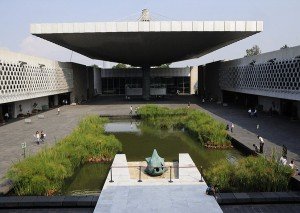 National Museum of Anthropology or Museo Nacional de Antropologia is the most famous museum in Mexico City and perhaps in the entire Mexico. Every year, it is visited by no less than two million tourists, thus making this Mexican tourist attraction one of the most popular in the world.
National Museum of Anthropology or Museo Nacional de Antropologia is the most famous museum in Mexico City and perhaps in the entire Mexico. Every year, it is visited by no less than two million tourists, thus making this Mexican tourist attraction one of the most popular in the world.
National Museum of Anthropology in Mexico City consists of two main divisions:
- An anthropological section (on the ground floor),
- an ethnographic section (on the second floor).
Each of the sections, in turn, comprises 11 exhibition halls. The National Museum of Anthropology in Mexico City gathered tens of thousands of exhibits of Mayan times, Aztecs and other ancient peoples, that once existed in the territory of Mexico.
Interesting: Here the treasures of the Mayan civilization, the famous Aztec calendar (Sun Stone), and other artifacts of history are stored.
Place to visit number 8: Chapultepec Castle
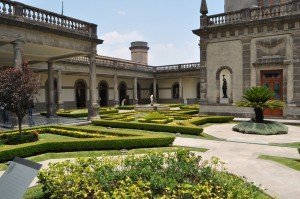 Chapultepec Castle is worth visiting not only because it is the former residence of the Mexican emperors and true masterpiece of architecture but because of the panorama, which opens here (a palace is located on a hill at an altitude of more than 2 thousand meters). It will be impossible to see such beauty during a visit of any other attractions of the Mexican capital. With regard to the history the Chapultepec Palace was built in the late 18th century by order of King Bernardo de Gálvez. The royal palace was put up for auction and sold out to the government of Mexico within a few decades.
Chapultepec Castle is worth visiting not only because it is the former residence of the Mexican emperors and true masterpiece of architecture but because of the panorama, which opens here (a palace is located on a hill at an altitude of more than 2 thousand meters). It will be impossible to see such beauty during a visit of any other attractions of the Mexican capital. With regard to the history the Chapultepec Palace was built in the late 18th century by order of King Bernardo de Gálvez. The royal palace was put up for auction and sold out to the government of Mexico within a few decades.
Of course, there were times when the Chapultepec Castle performed its direct function of the imperial residence, but this period did not last long. So, in the 19th century mansion in the premises of the Royal Military Academy was situated, in the 20th century National Astronomical Observatory was there, and today we can see the exposition of the National History Museum.
It turns out that at the time at the Chapultepec Palace tours you can kill two birds with one stone:
- feel the beauty of the castle,
- learn about all interesting events from the history of ancient and modern Mexico.
Interesting: Be sure to climb to the roof of the Chapultepec Palace because it is, if not the eighth wonder of the world, then looks like something similar. On the roof there is a huge royal garden with trees, walkways and flower beds!
Place to visit number 9: Trotsky House
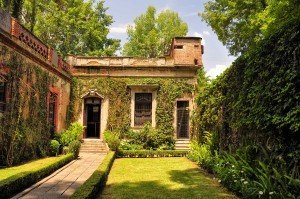 Trotsky House is located in the district Coyoacan of the Mexico City, though not for long but it was a refuge of Leon Trotsky, who had fled from the Soviet Union. The last months of life of the famous revolutionary were spent here, where he was killed in 1940 on the order of the NKVD.
Trotsky House is located in the district Coyoacan of the Mexico City, though not for long but it was a refuge of Leon Trotsky, who had fled from the Soviet Union. The last months of life of the famous revolutionary were spent here, where he was killed in 1940 on the order of the NKVD.
In Mexico Trotsky was highly respected. And when locals hear of Russia, always think of the Russian revolutionary, who had found refuge in their country.
In 1990, the house became a museum. Today it houses an exhibition dedicated to:
- Trotsky’s activities, where there are works written by him,
- Trotskyist literature,
- other equally valuable historical documents.
Leon Trotsky turned his house into a fortress: he knew that sooner or later somebody would come to kill him. But the iron shutters, double walls and a police patrol had not saved his life.
Interesting: The fatal blow was struck by the NKVD agent, who introduced in a revolutionary environment. Grave of Leon Trotsky is in the yard.
Place to visit number 10: Plaza of the Three Cultures
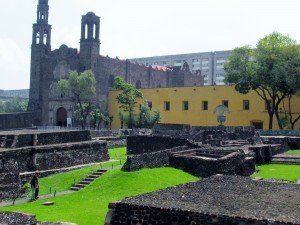 Plaza of the Three Cultures or Plaza de las Tres Culturas is called so because it represents a combination of three periods in the Mexican history. Aztec pyramid of Tlatelolco, the colonial church of Santiago and the modern building of the Ministry of Foreign Affairs are a reflection of the architectural heritage of these three cultures.
Plaza of the Three Cultures or Plaza de las Tres Culturas is called so because it represents a combination of three periods in the Mexican history. Aztec pyramid of Tlatelolco, the colonial church of Santiago and the modern building of the Ministry of Foreign Affairs are a reflection of the architectural heritage of these three cultures.
You can see:
- the remains of the main pyramid temple,
- other buildings of the Aztecs,
- wander through the paths around them.
The Spaniards recognized the religious significance of the place and built a monastery here, and then, in 1609, Santiago Temple appeared there. The church was built entirely of volcanic rock. Interior of the church was recently restored, preserving the remains of frescoes on the walls, stained glass windows and a stone altar.
Interesting: On Sunday, visiting the Plaza de las Tres Culturas can be combined with a visit to the nearby street market.